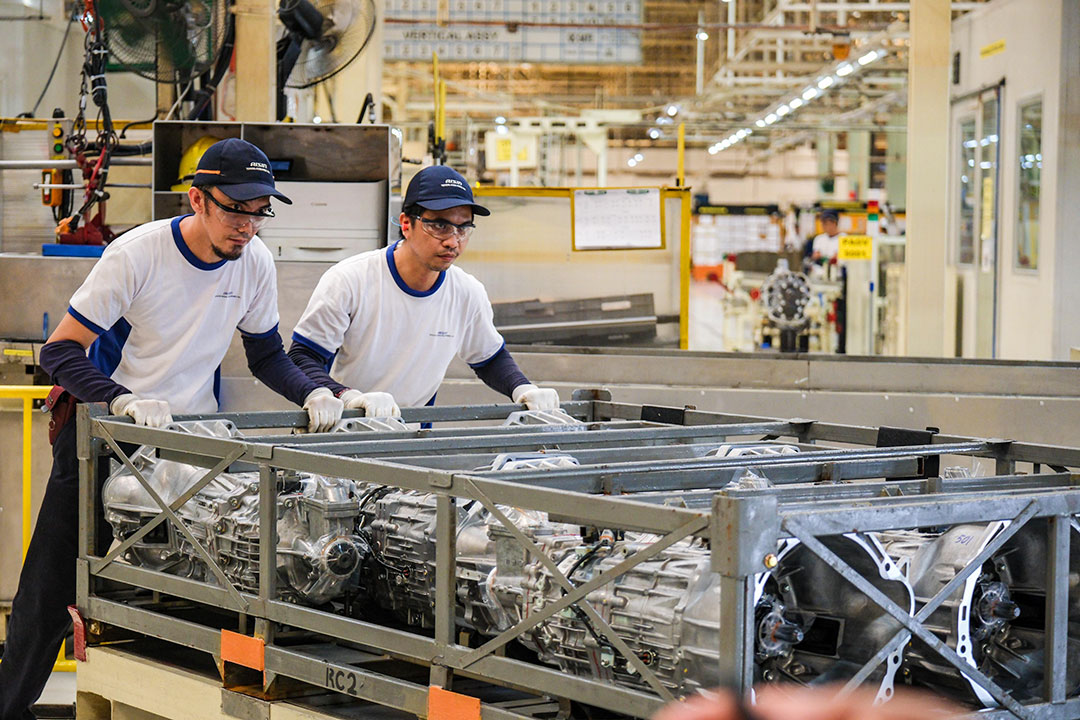




Philippines Trade Update: Trade trajectories trend along
 DOWNLOAD
DOWNLOAD

Policy Rate Updates: Double cut finale
 DOWNLOAD
DOWNLOAD

Monthly Economic Update: One for the road
 DOWNLOAD
DOWNLOAD


Factory activity growth slows in December

Factory activity in the Philippines expanded at a slower pace in December, reflecting modest growth in new orders and output across the sector, S&P Global said on Tuesday.
The S&P Global Philippines Manufacturing Purchasing Managers’ Index (PMI) stood at 51.5 in December, lower than the nine-month high of 52.7 in November.
S&P Global said the headline index showed only a modest improvement in operating conditions. At 51.5, the December figure was the weakest in three months or since the 50.6 reading in September.
 A PMI reading above 50 denotes better operating conditions than in the preceding month, while a reading below 50 shows a deterioration.
A PMI reading above 50 denotes better operating conditions than in the preceding month, while a reading below 50 shows a deterioration.
“The year concluded with yet another expansion across the Filipino manufacturing sector. Output and new orders continued to rise, albeit at softer rates,” Maryam Baluch, an economist at S&P Global Market Intelligence, said in a report released on Tuesday.
The headline PMI measures manufacturing conditions through the weighted average of five indices: new orders (30%), output (25%), employment (20%), suppliers’ delivery times (15%) and stocks of purchases (10%).
S&P Global said the easing manufacturing growth in December was mainly due to a “notable softening” in new orders, which grew at the slowest pace in four months.
“Moreover, total sales growth was focused domestically as the demand picture across international export markets deteriorated, with manufacturers reporting a fresh and solid fall in new export sales in December,” it said.
Manufacturing output also grew at the weakest pace in three months, S&P Global said. Despite this, output growth remained robust amid a steady rise in new orders.
“Firms also noted growing supply-side challenges with average lead times lengthening again in December. Congestion and longer delivery times for imports were blamed for delays. Moreover, vendor performance deteriorated at the greatest extent in five months,” it said.
S&P Global noted that manufacturing firms slashed jobs in December, as employment dropped for the second straight month.
“The main concern in the sector remains the further curtailment of workforce numbers. Evidence of spare capacity and a cooldown in new order growth prompted redundancies,” Ms. Baluch said.
S&P Global said Philippine manufacturers also reported increased inflationary pressures as prices of fuel, materials, and shipping rose. This prompted firms to hike selling prices.
Headline inflation may have eased to 4% in December, based on a median estimate in a BusinessWorld poll last week. If realized, December inflation would be a tad slower than 4.1% in November and significantly lower than 8.1% in December 2022.
The local statistics agency will release the December inflation data on Jan. 5.
“Sluggish demand from overseas markets and tight borrowing conditions across the country will act as headwinds as we move into 2024. That said, inflationary pressures are expected to pose less of a threat than seen at the start of 2023, despite gaining pace during December,” Ms. Baluch added.
Still, Filipino manufacturers remained optimistic for the new year as business confidence rose to a four-month high, according to S&P Global.
“Hopes of improving demand conditions and plans for increased marketing campaigns boosted optimism,” it said.
Rizal Commercial Banking Corp. Chief Economist Michael L. Ricafort said factory activity expanded in December, due to the seasonal increase in importation, manufacturing, and other production activities since the third quarter of 2023.
However, elevated inflation and borrowing costs may have weighed on investments, including those in the manufacturing sector, Mr. Ricafort said.
“Furthermore, softer manufacturing and services PMI data for many developed countries around the world… partly reduced the demand for exports and somewhat dragged on some local manufacturing activities,” he said.
Second fastest in Asia
The Philippines recorded the second-highest PMI reading among six Southeast Asian countries in December, just behind Indonesia (52.2).
Manufacturing activity in Vietnam (48.9), Malaysia (47.9), Thailand (45.1) and Myanmar (42.9) contracted in December.
On average, the Association of Southeast Asian Nations (ASEAN) headline PMI dropped to 49.7 in December, easing from 50 in November.
S&P Global said the ASEAN headline PMI contracted for the third time in four months.
“Central to the deterioration in operating conditions was a quicker fall in new orders. Inflows of new work fell for the fourth month running in December, which in turn weighed on production growth,” it said.
Security Bank Corp. Chief Economist Robert Dan J. Roces said the slower growth in December may be attributed to difficulties in supply chain management, possible shifts in consumer demand, fluctuations in prices of raw materials, and changes in overall economic conditions.
“(The Philippines) still outperformed ASEAN’s 49.7 though. We calculated that the Philippines’ average monthly PMI was at 52.2 in the fourth quarter, the highest in three quarters,” he said.
He also noted that a recovery in the manufacturing sector may contribute to the Philippines’ faster gross domestic product (GDP) growth, adding that GDP expansion could average 5.8% in the fourth quarter of 2023.
China Banking Corp. Chief Economist Domini S. Velasquez said global economic headwinds continued to weigh on the manufacturing sector.
“Data from China and the rest of Asia pointed to softer activities towards the end of the year. Bellwether manufacturing countries, especially with regard to semiconductors, such as Taiwan and South Korea posted contractions in December,” she said.
For this year, the Philippine manufacturing sector is expected to grow modestly amid easing inflation.
“The easing of inflationary pressures is expected to support domestic demand, while a recovery in the semiconductor industry is likely to boost external demand in 2024. These factors should contribute to a gradual improvement in the manufacturing sector’s performance,” Ms. Velasquez added. — By Keisha B. Ta-asan, Reporter
This article originally appeared on bworldonline.com





 By BusinessWorld
By BusinessWorld